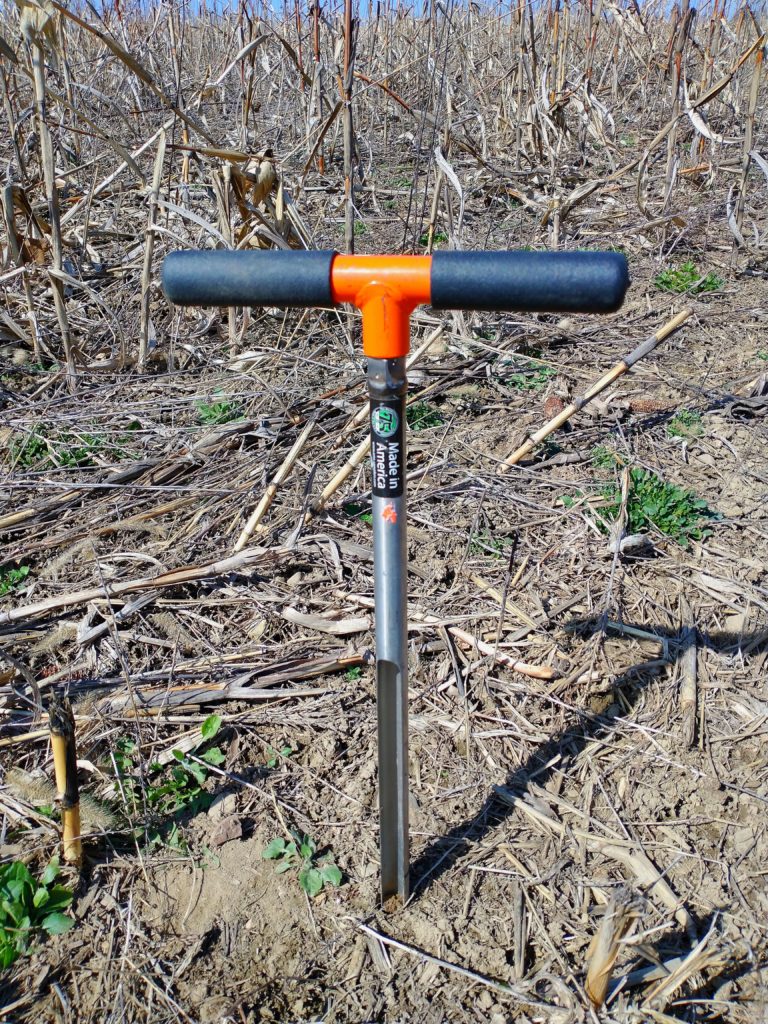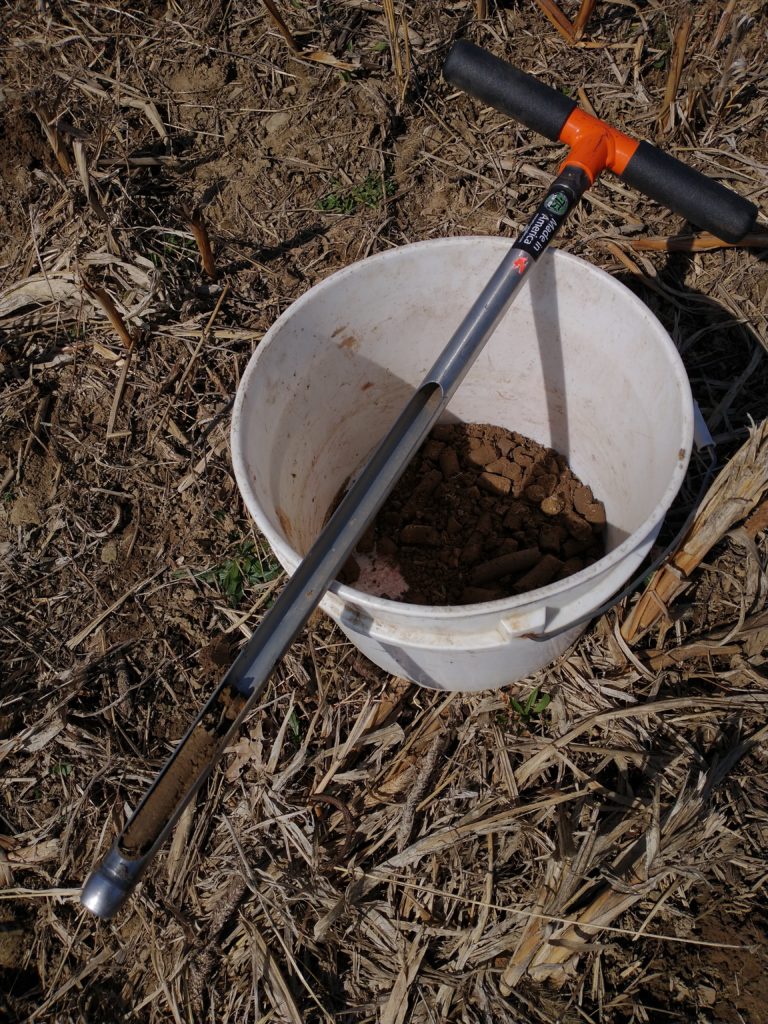Understanding soil fertility is a critical component of food plot success. This requires taking soil samples from your plots and having those samples analyzed by a qualified laboratory. Once you know the condition of your soils you can then develop an approach to correct any inadequacies (i.e., optimum lime and fertilizer requirements) that may limit the success of your food plots for growing a particular crop or plant community.
TAKING SOIL SAMPLES
Always collect samples when conditions are optimal – not excessively wet or dry. Soil sampling requires minimal equipment. I use a sampling “T” probe to collect soil from approximately 3” – 6” deep into the soil profile. A trowel or shovel can also be used to collect soil samples by digging a small hole and saving a portion of the soil profile.
Once a sample is collected place it into a small bucket and move to your next location. Soils should be collected from throughout the plot to produce a representative, composite sample. The number of samples depends on the size of the plot. Samples need to be collected for each plot as fertility varies greatly and recommendations are based on the crop or vegetation community planned for that plot.
When you have collected enough samples from your plot break up any clods in the bucket, mix the soil well, and allow the sample to air dry. Once dried a sub-sample of about 1 cup can be removed from the bucket and placed in a bag to be sent to a soil lab. The lab will then provide a soil report that includes the chemical analysis of the soil along with lime and fertilizer recommendations for the specified crop(s) that will be planted.

Soil Sample Probe (18″) 
Sample Probe and Bucket 
Soil Sample Cores
SOIL LAB RECOMMENDATIONS
Depending on the approach that one chooses food plot soil amendments need to be reviewed. Those soil lab recommendations can be applied at recommended rates or modified to meet the requirements of the person planting that food plot based on cost or other factors. If using ag fertilizers those rates will be provided in the soil test analysis (N, P, K micronutrients, and lime).
If operating in organic or other cropping systems fertility requirements can be achieved with composted manure, raw manure, organically certified amendments (e.g., pelletized compost), or through crop rotations. When using these amendments, it is important to know their chemical content (N, P, K) and be able to match that with the fertility needs of the crop or crops that you are planting in a food plot. If your plot follows a legume (clover, soybeans, alfalfa) nitrogen fixation also needs to be considered as those crops provide additional soil N and thereby reduce the quantity of nitrogen needed from fertilizer, compost, or manure.
Lastly, nutrient management in food plots differs from that for agronomic crops. Agronomic cropping systems remove large amounts of nutrients incorporated in the grain and/or above ground plant parts that are harvested and removed from fields each year. These nutrients are EXPORTED from the fields where the crops are grown. Because of this, these nutrients must be replaced following each planting cycle or crop yields are not economically sustainable. Additionally, concentrated fertilizers have a relatively short period of time where they can be utilized by plants and are easily be lost to other ecosystems (sediment runoff and attached P, Nitrate leaching). Plots that depend on organic inputs or utilize rotations and minimal tillage have significantly longer and less “leaky” nutrient cycles with associated healthier soils.
Food plots have fertility requirements just like those of agronomic crops, but nutrient movement and cycling is different. When food plots mature their grain and/or above ground biomass is not exported from the plot in the same manner that occurs for agronomic crops. Local wildlife consumes much of the biomass or grain produced in food plots – that’s what they’re there for. A significant portion of the nutrients in the grain or biomass that is removed by game and non-game species feeding in those plots is returned to the soil through animal waste deposited locally – sometimes in those very food plots or adjacent habitats. So, the nutrient budget in your food plots is unique in that those nutrients are incorporated into local wildlife and nutrient translocation is local and not external to the greater ecosystem where it occurs.
Remember the purpose of your food plots – you’re not producing a crop for harvest and sale as would occur in an ag production system driven by economics. But having an inexpensive soil analysis completed on each of your plots is still very important. Many failed food plots that I observed over the years were the result of poor nutrient management. Not only does it make sense to understand the nutritional needs of the crop you are planting, and the quantity of nutrients required to produce a mature crop, but soil tests will also prevent overspending on expensive amendments that in many cases are not needed. Fertilizer prices in 2021 are very high. Understand your soils – manage them accordingly and plant smart!
